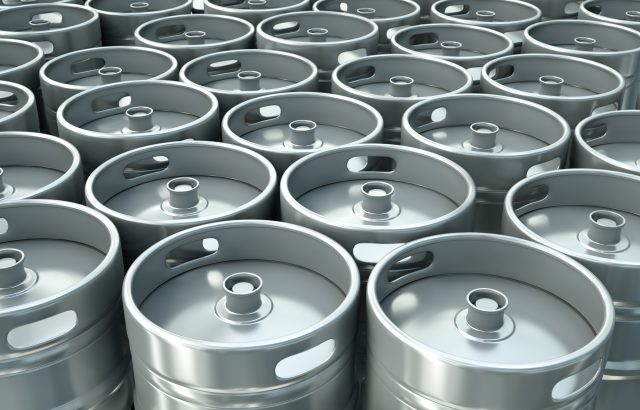Globally, kegged beer wins on metrics, but is it thriving?
Kegged beer has experienced growth worldwide, driven by the expanding craft beer sector, but it still faces challenges. db finds out more.

The global kegged beer sector was valued at approximately US$55.4 billion in 2023 and is projected to reach US$73.89 billion by 2030, growing at a compound annual growth rate (CAGR) of 4.2%, according to a report from market research firm MMR.
Looking at what is driving demand , the report analysis has shown that the growing popularity of beer, particularly among young consumers, has “significantly boosted the demand for beer kegs”.
The data outlined how “the proliferation of craft breweries has increased the need for kegs, as these establishments often rely on kegs for storage and distribution”.
This, it noted was down to wins in areas such as sustainability and cost efficiency since “kegs offer reusable and cost-effective packaging solutions, reducing waste and packaging expenses for breweries”.
Globally, however, the market share of kegged beer far outweighs beer sold in casks, which is predominantly only favoured in the UK.
The proliferation of kegged beer in North America, for instance, is gigantic and still growing. The region “held the largest market share in 2022, with the US leading due to its substantial beer consumption,” according to the report findings.
Partner Content
The findings also showed growing demand for kegged beer across Asia-Pacific with emerging markets playing a big role in boosting the sector. The report outlined how Asia was “anticipated to experience significant growth, driven by increasing beer consumption in countries like China and India”.
In terms of industry trends, there has also been a great deal of material innovation in kegged beer. For instance, the research revealed how even though “manufacturers are focusing on producing kegs from materials like stainless steel and plastic to enhance durability and reduce weight” there are still “technological advancements” being made.
One example that can be seen here are the “developments in keg tracking and maintenance technologies [which] are improving supply chain efficiency and product quality.
The challenges for kegged beer, globally, is the sector’s “raw material price volatility” which is being seen via “fluctuations in the prices of materials like stainless steel [which] can impact production costs”.
Other issues that circulate for kegged beer to stay relevant is its need to meet “regulatory compliance”. The brewing and manufacturing industry must make sure it is “adhering to various regional regulations regarding packaging” along with recognising how other restrictions such as “environmental standards poses challenges for manufacturers”.
The findings have also ultimately shown how that “the beer kegs market is poised for continued growth” and this has been “driven by the expansion of the craft beer sector”. However, this is also hinged on the sector “addressing challenges related to material costs and regulatory compliance” which analysts have warned “will be crucial for sustained success in this industry”.
Related news
Treasury Wine Estates plans leaner future amid US and China slowdown
The db wine crime files 2025: part 2
Don't pour this Christmas drink down the sink, plumbers caution




